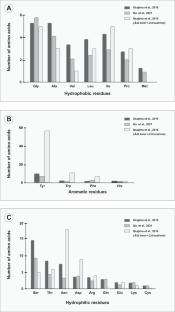Understanding the Specific Implications of Amino Acids in the Antibody Development
Abstract
As the demand for immunotherapy to treat and manage cancers, infectious diseases and other disorders grows, a comprehensive understanding of amino acids and their intricate role in antibody engineering has become a prime requirement. Naturally produced antibodies may not have the most suitable amino acids at the complementarity determining regions (CDR) and framework regions, for therapeutic purposes. Therefore, to enhance the binding affinity and therapeutic properties of an antibody, the specific impact of certain amino acids on the antibody’s architecture must be thoroughly studied. In antibody engineering, it is crucial to identify the key amino acid residues that significantly contribute to improving antibody properties. Therapeutic antibodies with higher binding affinity and improved functionality can be achieved through modifications or substitutions with highly suitable amino acid residues. Here, we have indicated the frequency of amino acids and their association with the binding free energy in CDRs. The review also analyzes the experimental outcome of two studies that reveal the frequency of amino acids in CDRs and provides their significant correlation between the outcomes. Additionally, it discusses the various bond interactions within the antibody structure and antigen binding. A detailed understanding of these amino acid properties should assist in the analysis of antibody sequences and structures needed for designing and enhancing the overall performance of therapeutic antibodies.



 求助内容:
求助内容: 应助结果提醒方式:
应助结果提醒方式:


